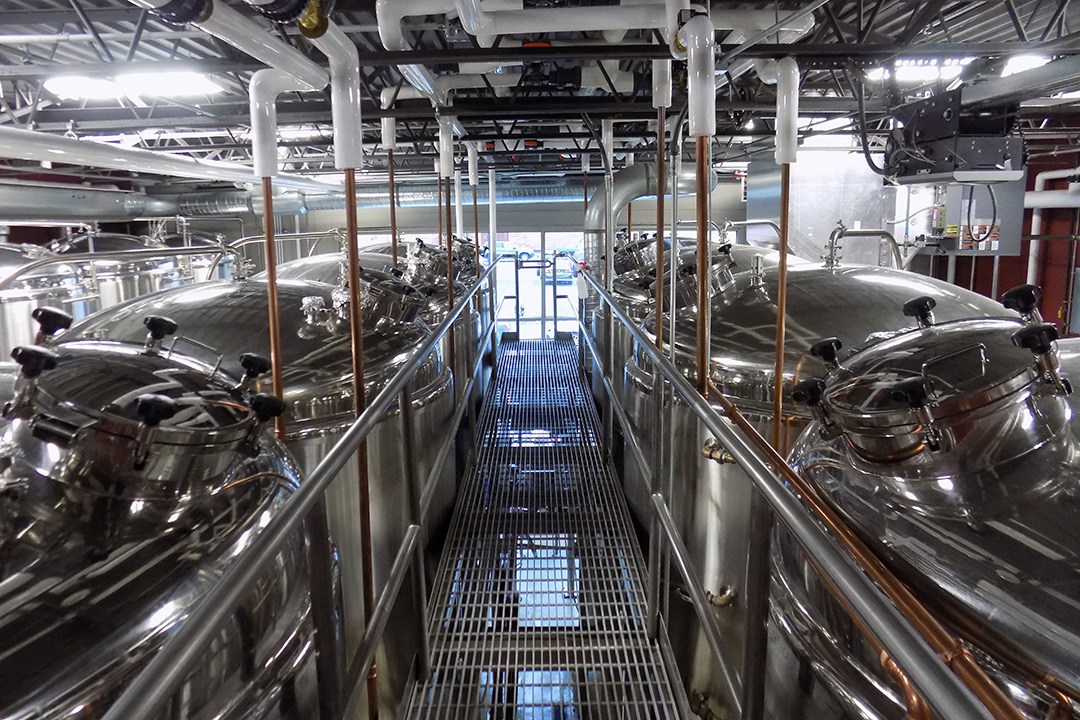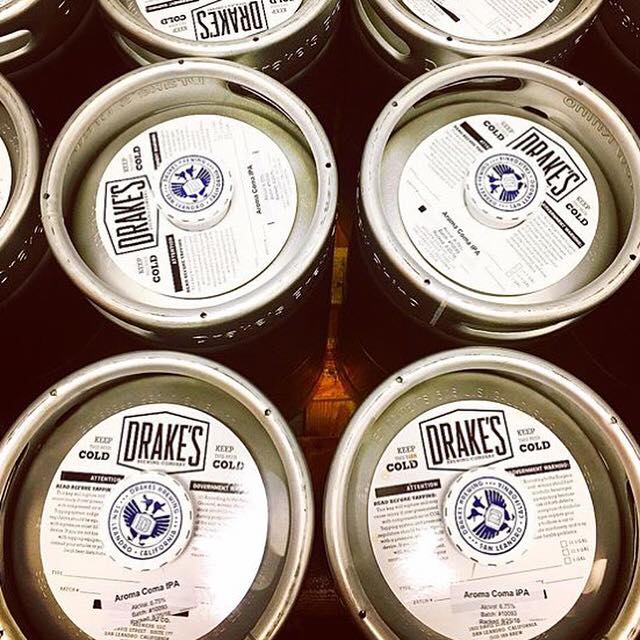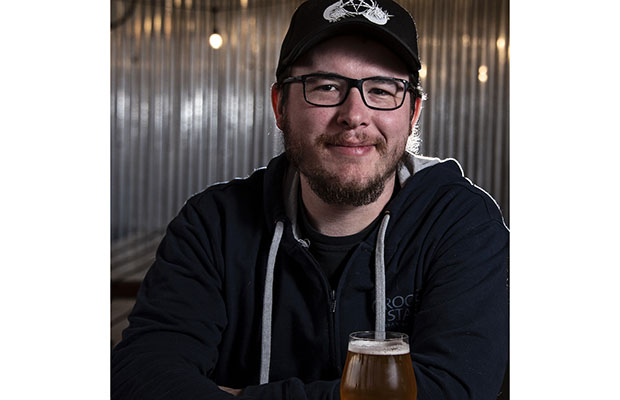
Max Pigman knew he wanted to do it right the second time. Maybe the third time.
The owner and president of Lewis & Clark Brewing looked back to the expansion of his Helena, Montana brewery in 2016 as a chance to do everything the way he wanted to see for the next 20 years.
No shortcuts and the ability to have quality beer for years to come was the goal when he started to draft his plans for the brewery’s brewhouse upgrade and expansion in 2016 for the nearly 20-year-old company.
“I’ve learned some of those lessons in the first couple of expansions,” he said. “I did things [in the past] where I said, ‘Well maybe we can do a really good job and we’ll buy really good floor paint and we’ll do it ourselves. Then six months later there’s a giant bubble on the floor and when it pops there’s a big area that’s not painted and it just looks bad.
“One of my primary goals this time around was not only to create a facility that’s absolutely operated at a really high level of efficiency, but I wanted it to be a showplace.”
There’s a reason aesthetic appeal is a priority for the brewery. Because it’s located in Montana’s state capital, Pigman said a lot of politicians come through the brewery, whether it be the governor’s office or different folks that come through during the legislative sessions.
“I just knew I wanted a facility that when you walked into you said, ‘Wow!’ I feel we really have built that kind of facility,’” he said of the $9 million project that was completed in mid-2017 with the ability to produce 60,000-barrels per year. “I might have been somewhat of a pain in the ass to the subcontractors about how to run pipes and wires and cables since I would tell them to take some extra time and get it straight.”
“I had high expectations, and I certainly put that on each trade. And the nice thing is the trades start to kind of police themselves because they look at the finish up to the point where they’re at and they realize, ‘Wow I don’t want to be the idiot that makes them look bad. This is looking amazing. So I’m going to take my time.’”
When Matt Kahn first opened Big Ditch Brewing, he was okay with inefficiency, as long as the beer was good. However, over time, he and his staff started figuring out ways to increase efficiency without sacrificing quality.
The brewery has been continually in growth mode since opening — currently brewing 30 times more beer in the brewery per week than when Big Ditch opened in 2015.
“It starts with adding staffing and training, and then adding more tank capacity in the form of fermenters and brite tanks,” Kahn said of improving the brewery’s workflow.
The Buffalo brewery started with five 40-bbl fermentors and one 40-bbl brite tank. Now they have eight 60s and two additional 60-bbl brites along with the 40-bbl brite.
After that, it became about efficiency in brewing — improving yield and reducing turnaround time for each batch, without sacrificing quality.
“We purchased an inline carbonator which took our carbonation time from 24-48 hours down to about five hours, we purchased flow meters to measure and control transfer to maximize efficiency,” Kahn said, “we improved our yeast measurement and pitching systems to get faster more consistent fermentations, and we improved our water systems so we could do multiple things at once, like brew beer and wash kegs.”
All of these little things helped Big Ditch get the most out of its equipment and space, and ensure it used its time effectively.
“Adjusting our mill gap to get better malt efficiency was a pretty big one,” Kahn added. “We purchased a silo and began receiving our malt in bulk, which saved us money on malt, space in our warehouse, and time opening bags.
“We eliminated some non-value added steps in our process, like time spent in whirlpool. All of this has made us way more efficient and improved our costs.”
It’s not really one single thing, but rather lots of little tweaks to the process that can save time and increase output in a brewhouse’s operation.
“Our brewers are working hard shepherding multiple batches at a time,” said Monday Night COO and co-founder Joel Iverson. “The right processes in place are able to help them with that.”
Iverson realized a big money saver was investing in a grain silo.
“Not only was that a money saver for it, we quickly realized that it also saved a lot of time,” he noted.
Pigman said at Lewis & Clark the brewery definitely wanted to have multiple malt silos.
Up until its expansion in 2016, it only had one. With its top seller being Miner’s Gold Hefeweizen, using bulk malted wheat instead of bag wheat was crucial.
“We were tired of humping literally hundreds of bags to make that beer,” Pigman said. “We also learned that in utilizing bulk malt, a lot of times what happens is the way the malt comes out of the silo, sometimes the way it shifts and moves around, the real tail end of that malt can be pretty nasty. It can have a lot of chaff and a lot of broken up husks and things that aren’t really great in production.
“So we decided to do two barley silos. That way, as we were getting low with one silo we can be blending in some of the back up silo that is full and have a better consistency on that malt.”
From the start, The Duck-Rabbit Craft Brewery has had a shell and tube heat exchanger that allowed the Farmville, North Carolina brewery to produce hot water significantly faster than it could otherwise produce it.
“That has helped with the constant battle of hot water management,” said founder and Brewmaster Paul Philippon.
Several years ago the brewery went a step farther and installed a secondary hot liquor tank, with its own pump, and tied in to all of the piping that distributes hot water throughout the brewery.
“The result is that where we used to juggle when different processes could take place based on hot water availability, now that’s not a factor,” Philippon said.
Also, as almost any growing brewery will do, Duck-Rabbit has developed procedures to mash in multiple batches in a day.
As soon as the grain from batch one is out of the mash tun, it can mash in batch two.
“This is nothing unique, of course, but since we are most commonly putting multiple brews into a given tank, it works very well for us,” Philippon said.
Pigman said another big design piece for him in the new Lewis & Clark brewhouse was the floor drains. He said he spent quite a bit of time researching different kinds.
“We had problems with our first facility where the drains just would not drink fast enough,” he said. “It wouldn’t take that effluent, especially when we had a high amount of hop or yeast content that we’re mixing into the drains.”
So it went with a slot drain system for the new brewhouse.
“I know I wanted to go fully stainless because I had done fiberglass in the past, and over time they broke up and you get pieces of it,” he said. “You’ve got cracks and potential for bacteria and all sorts of nasty things that can grow in there. We went with a complete stainless system and just a slot drain and we’ve been really happy with that.
“It’s very strong. You can run forklifts over it. It has a nice one inch slot running down, and that does a great job. I’ve been really happy with that. And the UCrete flooring system that we got from 3M … can take thermal shock, can take chemical abuse and all that stuff.
“Both of those are expensive, but I’m glad that we spent the money on them.”
Lewis & Clark worked with Vern Spaulding at Providence Process Solutions to put together a brewhouse layout that would be workflow efficient as well as helping with creating high-quality beer and it would look good.
One of the advantages Pigman had in getting ideas was because of his job as a public speaker for Realtor.com. He traveled 45 weeks a year and spent time visiting other breweries all over the country getting input on what brewers liked and disliked about their workflow and system.
“I tried to learn from a lot of other people’s wins and losses. You’re never perfect but I believe we put together a pretty great system in the way it’s designed and the way it flows,” he said of the 60-barrel facility Lewis & Clark opened up less than two years ago. “I was trying to think in the future about how we’re only at 10,000 barrels now, but we’re designing a system that can do 60,000. When we have that kind of product movement, how do things move throughout the factory, how do trucks get loaded while cans are being palletized while beer is getting drained out and all those different processes to make sure that that increased flow wasn’t going to cause some sort of weird bottleneck down the road.”
Lewis and Clark would eventually need a centrifuge and a visit to Avery Brewing sparked a plan, Pigman said.
“Maybe at our current level it was hard to justify [buying it] but where we were growing to, it would be easy to justify for efficiencies and a number of other reasons,” he said. “We had budgeted for a centrifuge and then we went to Avery and they had just opened their new facility and we noticed that one of the things that they had decided to do was build a containment center around their centrifuge — basically a room for the centrifuge because they can make a lot of noise.
“We actually went back to the drawing table and built the room for our centrifuge.”
When he was at Crux Fermentation in Oregon, Pigman said he picked up an idea on the size of a malt room and putting some heavier duty roof pieces in so that down the road if a brewery wants to move to Supersacks, a pulley system could be put in.
“People are willing to help each other,” Pigman said. He’s called brewers back for advice on investments and expanding. “I’ve had had some people steer me away from some things I was looking at and definitely had people reinforce the decision to move forward on some because a lot of this stuff is incredibly expensive.”
(From the May/June 2019 Issue of Brewer Magazine)






1 Trackback / Pingback